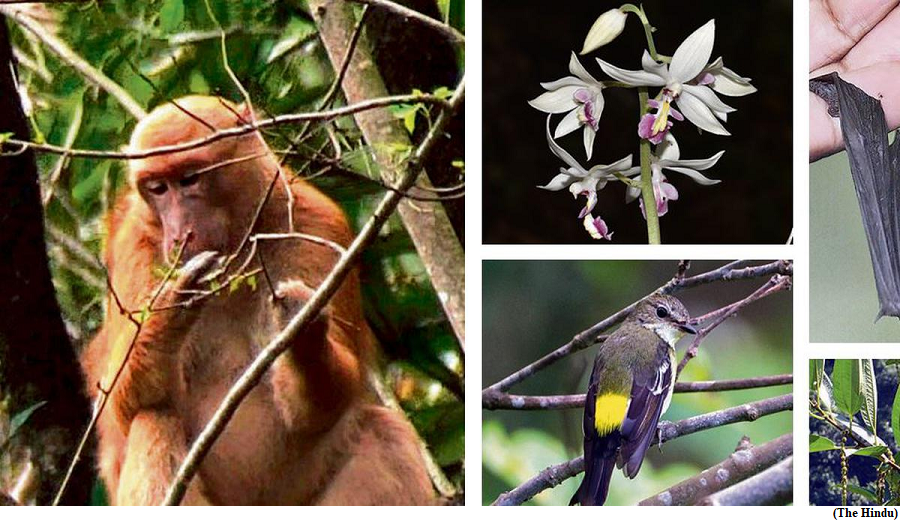Water mission may miss 2024 target (GS Paper 3, Environment)

Why in news?
- The government’s ambitious ‘Har Ghar Jal’ initiative to provide all rural households in India with potable water connections by 2024 under its flagship Jal Jeevan Mission is likely to fall short of its target.
- Only 75% of village homes are likely to have taps delivering drinking water by April 2024.
Challenges:
- The scheme was announced by Prime Minister in 2019, a time only 16% of rural households had tap water.
- It faced a slew of challenges such as the pandemic, a dearth of qualified manpower in States, the scale of the exercise, State-specific issues and even the ongoing Russia-Ukraine war meant that the project only picked up speed in several States in 2022.
- While the pandemic led to delays, the Ukraine war resulted in major shortages of steel and cement, which are critical to the manufacture and connection of metal pipes. This led to major price revisions and considerable time was lost in renegotiating contracts and improving supply.
- There are States, for instance Rajasthan, where actual availability of water is a challenge. In West Bengal and Kerala, there are problems with water contamination. So ensuring adequate water quality is an issue.
- The Jal Jeevan Mission has a financial outlay of ₹3.60 lakh crore, with the Centre funding 50% of the cost.
‘Functional’ tap:
- The mission’s stated objective is to provide ‘functional’ tap connections that give at least 55 litres per person per day, of potable or drinking water.
- According to data by the Jal Shakti Ministry, about 63% of rural households have tap connections, meaning that about 9.1 crore households have benefited from the programme since 2019.
Few certified villages:
- There is a system of ‘certification’ wherein the gram panchayats in a village which district and block level authorities report as fully connected call a quorum, and upload a video attesting the veracity of the claim.
- Of the nearly 1,68,000 villages that are reported as ‘Har Ghar Jal’ where all houses have tap water, only 58,357 villages have been so ‘certified’, suggesting that the gap between reported and verified connections is wide.
Case of Uttar Pradesh:
- In Uttar Pradesh, for instance, only 5.1 lakh or 1% of households reported tap connections when the scheme was launched. This grew to 32 lakh by August 2021 and then grew slower to 42 lakh by August 2022. In the last 10 months, however, the number of homes with connections has dramatically jumped to 1.3 crore, or about half the total rural households.
- However, of U.P.’s 98,455 villages, only 13,085 have reported being fully connected and only 2,837 of them have certified themselves. Thus, about 3% of U.P. villages can be said to be 100% certified as Har Ghar Jal villages.
States covered:
- Only eight States and Union Territories so far have reported all their villages as 100% connected, but nearly all of them were well connected in 2019 itself.
- Haryana, Gujarat and Punjab, the largest of these States, already had over 50% coverage in 2019.
India adds 664 animal species to its fauna database, 339 taxa to its flora
(GS Paper 3, Environment)
Why in news?
- Recently, the details of new discoveries and new records were released by Union Minister for Environment, Forest and Climate Change in Kolkata.
- The faunal discoveries have been compiled in a publication by Zoological Survey of India (ZSI) titled ‘Animal Discoveries - New Species and New Records 2023’, whereas floral discoveries are contained in ‘Plant Discoveries 2022’ published by the Botanical Survey of India (BSI).

Details:
- India added 664 animal species to its faunal database in the year 2022. These comprise 467 new species and 197 new records (species found in India for the first time).
- The country also added 339 new plant taxa, 186 taxa that are new to science and 153 taxa as new distributional records from the country in 2022.
Fauna Species:
- Among the major fauna species discovered are three new species and one new record of mammals; two new records of birds; 30 new species and two new records of reptiles; six new species and one new record of amphibia; and 28 new species and eight new records of fish.
- The mammal species discovered include two species of bats; Miniopterus phillipsi, a long-fingered bat, and Glischropus meghalayanus, a bamboo-dwelling bat both from Meghalaya.
- Sela macaque (Macaca selai), a new macaque species was discovered in the western and central Arunachal Pradesh and named after the Sela Pass.
- The new records include Macaca leucogenys, a white-cheeked macaque earlier found in Modog, southeastern Tibet, and sighted in India for the first time in 2022 in West Siang, Arunachal Pradesh.
- The list also includes Ficedula zanthopygia, the yellow-rumped flycatcher, earlier known from Mongolia, Transbaikal, southern China, Korea, western Japan, and found last year in Narcondam Island of the Andaman archipelago.
- The maximum number of new faunal discoveries has been of invertebrates with 583 species, while vertebrates constitute 81 species.
- Insects dominate among invertebrates with 384 species, whereas fish dominated among vertebrates, followed by reptiles, amphibia, mammals and aves.
State-wise distribution:
- In 2022, the maximum new discoveries were recorded from Kerala. As many as 82 animal species new to science and 15 new records were from Kerala, which contributes to 14.6% of the new species and new records.
- Karnataka followed with 64 new species and 24 new records accounting for 13.2%. Tamil Nadu saw 71 new discoveries and 13 new records, contributing to 12.6% of all the new discoveries and new records in the country.
- The Andaman and Nicobar Islands contributed to about 8.4% of the discoveries, whereas 7.6 % discoveries were from West Bengal and 5.7% from Arunachal Pradesh. With the new discoveries and new records, the fauna diversity of the country increased to 1,03,922.
Flora:
- ‘Plant Discoveries 2022’ contains an enumeration of 339 taxa, which have been added to the Indian flora during 2022.
- These comprise 319 species, and 20 infraspecific taxa as new to the Indian flora. Of these, 186 taxa are new to science and 153 taxa are new distributional records from India.
Will signing Artemis Accords benefit India?
(GS Paper 3, Science and Technology)
Why in news?
- Recently, India became the 27th signatory to the Artemis Accords, a set of non-binding guidelines that underpin the Artemis programme, a U.S.-led project to return humans to the moon permanently.

Why do the Accords matter?
- The Artemis programme includes plans for a base on the lunar surface, multiple spacecraft to ferry humans and cargo, an orbiting space station, and a constellation of satellites to help with navigation and communication.
- The first Artemis crewed mission to the moon’s surface is likely in 2026. The programme resembles a Chinese-Russian plan for an ‘International Lunar Research Station’.
- With Russia reeling under sanctions, China has taken the lead on the project, outlining similar plans for a permanent base and a lunar satellite constellation.
Where do the Accords fit in space law?
- Modern space law is erected on four international agreements that cover issues like the peaceful use of space, registration, and liability. They were struck between 1967 and 1976, at the time of the first Space Race and Cold War detente.
- A fifth treaty, the Moon Agreement, was introduced in 1979 but neither the U.S. nor the Soviet Union signed it. India signed it but didn’t ratify it.
- One provision in the Artemis Accords allows actors to extract and utilise space resources. This could be at odds with the Moon Agreement, which asks for gains from commercial exploitation of lunar resources to be distributed.
- This has not stopped countries like Australia and France which previously signed the Moon Agreement, from becoming Artemis signatories. In reality, the provisions of the Accords and the Moon Agreement are vague enough for lawyers to play according to the rules of both.
- Also, even if the Artemis programme succeeds and private enterprises set up settlements on the Moon, resource extraction will likely be restricted to using the lunar soil to build habitats and lunar ice for sustaining life.
Why didn’t India sign the Accords earlier?
- The Artemis Accords were drafted in 2020, just as India was opening up its own space sector to private players.
- While being a signatory to the Moon Agreement may have initially given India pause, the cases of Australia and France are reassuring. India’s own attitude has also evolved, with its new space policy allowing private players to mine any “space resource”.
- The dramatic developments of the last three years have made it clear that divisions between the U.S. and China are too deep for them to agree on a complex new international law on the Moon until their ties improve.
- Finally, ties between India and the U.S. have been on an upswing, and there is less hesitation in India about joining an America-inspired international effort.
Way Forward:
- Signing the Artemis Accords alone has no financial implications for India but if the country wants to be a major player in the Artemis programme, ISRO will need a significant hike in its annual budget, which stands at about ₹12,500 crore this year.
- At present, ISRO’s lunar exploration programme is impressive but modest. Its Chandrayaan-3 mission is scheduled to make India’s first soft landing on the moon in the next few weeks.
- It may also take three years or more before India independently sends humans into space as part of its Gaganyaan project.
- India must overcome domestic resistance to collaboration with other space agencies, enable its private sector to work with other Artemis members, and develop legislation that encourages space activities.




